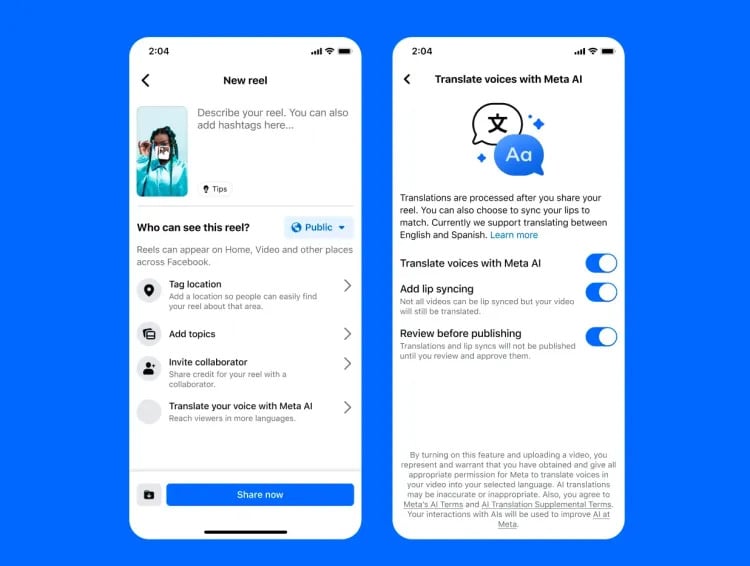Meta is expanding access to its AI-powered voice translation tool that allows creators to dub Reels from English to Spanish automatically and vice versa. The feature is now available to Facebook creators with over 1,000 followers and all public Instagram accounts.
The tool uses artificial intelligence to translate speech, synthesize the creator’s voice in another language, and, optionally, synchronize the translated audio with lip movement in the video. This functionality is designed to help creators reach multilingual audiences without having to produce separate versions of the same content.
How the Tool Works
Creators can access the feature while publishing a Reel by selecting the “Translate your voice with Meta AI” option. Once enabled, Meta will automatically generate a dubbed version of the audio in the target language. The option for lip-syncing is also available in the same menu.
Before publishing, creators can preview the dubbed version and make any necessary adjustments. The translated video will display a label indicating it was AI-generated using Meta’s tools.

The voice translation tool uses AI to clone the creator’s voice, preserving tone and delivery style in the translated output. The lip-syncing capability relies on facial alignment models that adjust mouth movement to the new language track, provided that the original video includes visible facial expressions and minimal background noise.
According to Meta, the tool works best with face-to-camera content and is optimized for clear speech.
Reels translated with the AI tool will be automatically shown to users in their preferred language, depending on their app settings. Viewers will see a disclosure tag on each translated video, and they can choose to disable translation in their preferences if needed.
Creators will also receive language-specific engagement metrics in their content insights, allowing them to track how translated Reels perform across different audiences.
Initially previewed at Meta’s Connect 2024 event, the feature currently supports only English and Spanish, but the company has confirmed that additional languages will be added over time. Meta has also indicated plans to improve the translation model’s accuracy and may later introduce support for web-based or third-party content inputs.
